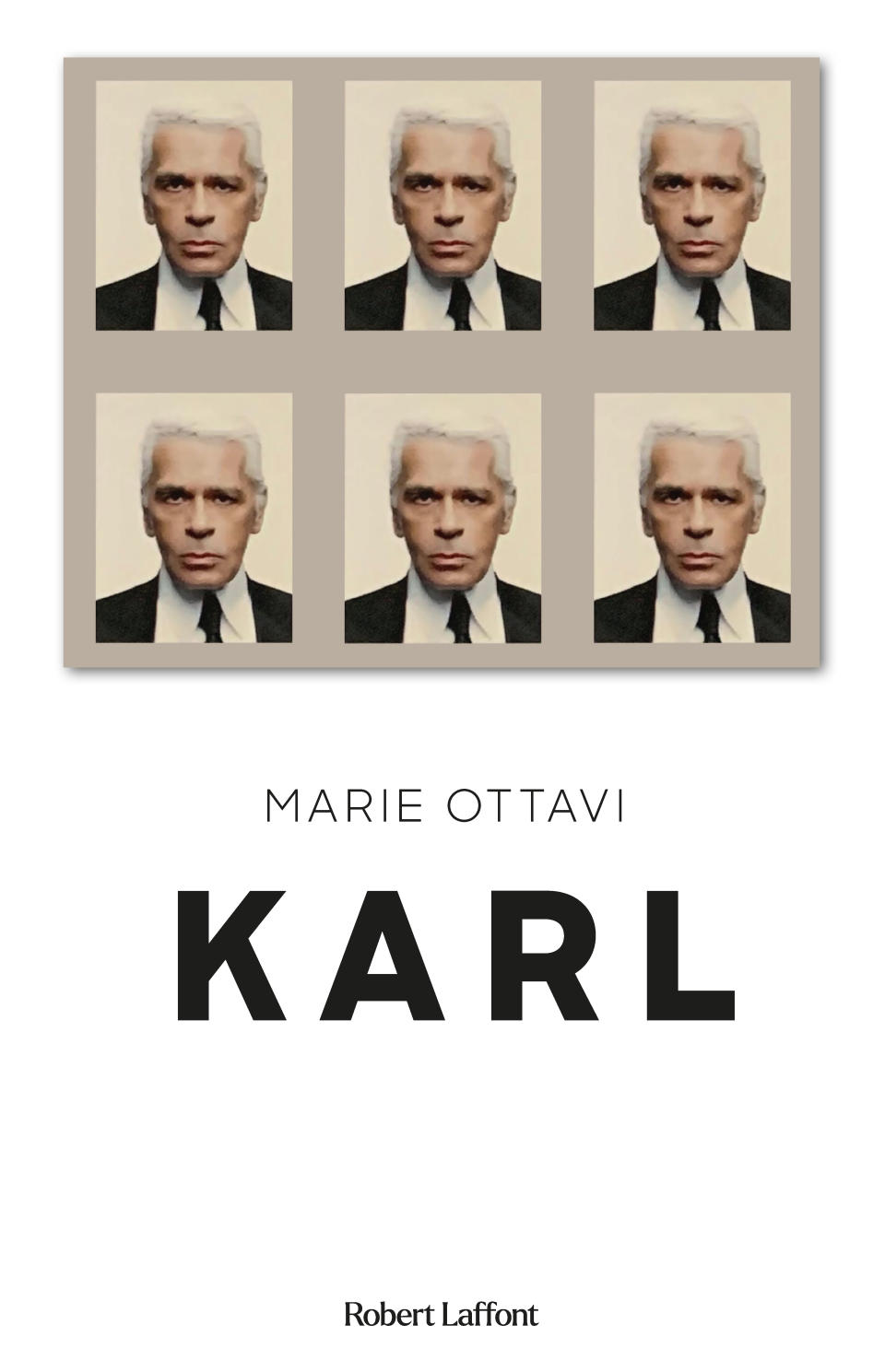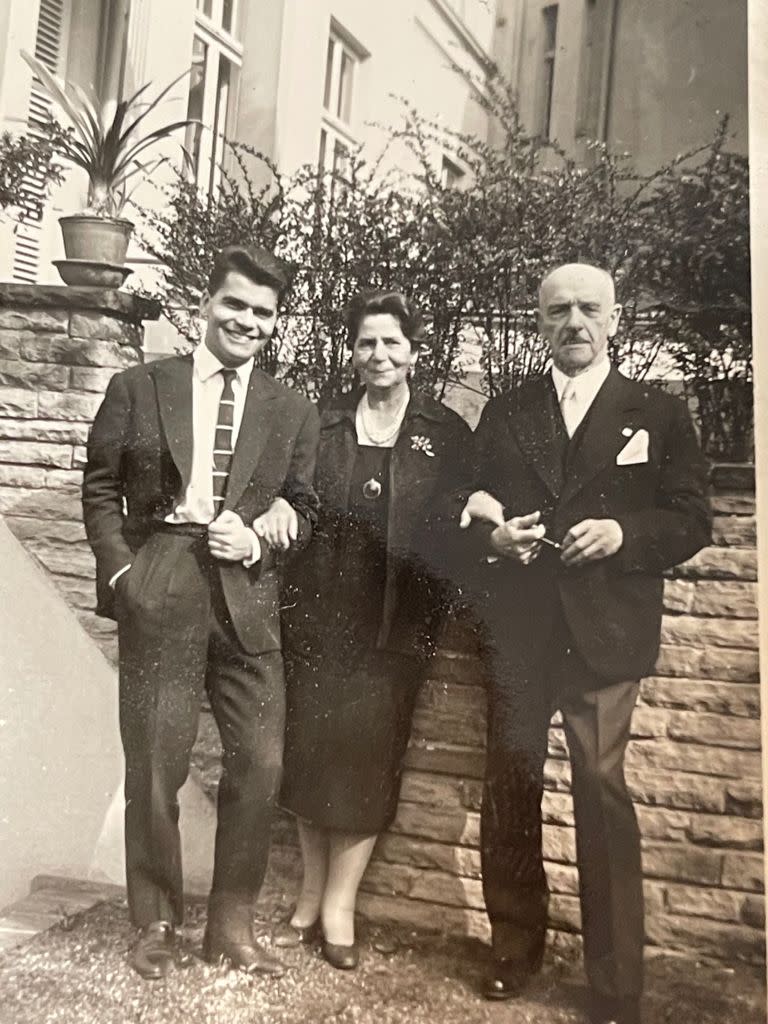Karl Lagerfeld’s Inner Circle Opens Up in New French Biography

PARIS — When French journalist Marie Ottavi wrote a book about Karl Lagerfeld’s longtime partner Jacques de Bascher in 2017, it was just as much an indirect portrait of the designer.
Following Lagerfeld’s death two years later, she felt it was time to tackle a full biography of one of fashion’s most legendary figures, persuading many members of his inner circle to talk about him for the first time.
More from WWD
Lagerfeld himself broke a lifelong silence about his relationship with de Bascher, a decadent dandy who stoked his feud with Yves Saint Laurent in the 1970s, by sharing his most intimate memories with Ottavi in two lengthy interviews for her debut tome.
“The first interview was truly exceptional in many ways, because it was the first time he had spoken in depth about Jacques de Bascher. He truly opened his heart. I asked him very intimate questions, and he answered them until he was almost in tears. I felt he was giving me something rare,” Ottavi recalled.
“When listening again to the interviews, I realized how precious they were,” she added. “It was the basis for the new project.”

Courtesy of éditions Robert Laffont
Having gained Lagerfeld’s trust and approval, Ottavi, who works at left-leaning French daily newspaper Libération, found that other doors opened after he passed away.
Princess Caroline of Monaco, Bernard Arnault and his wife Hélène, Tom Ford, Alessandro Michele and Paco Rabanne are just some of the people who agreed to grant interviews for her new tome “Karl,” published in French by éditions Robert Laffont on Thursday.
Then there were the members of Lagerfeld’s inner circle: his longtime spokeswoman Caroline Lebar; collaborators Gilles Dufour, Eric Wright and Eric Pfrunder, among others; designer Silvia Fendi; editor and stylist Carine Roitfeld, and Bruno Pavlovsky, president of fashion and president of Chanel SAS.
“I was very pleased that someone like Bruno Pavlovsky, who is a key executive at this secretive company, agreed to speak with me. I was surprised by how open he was,” said Ottavi.
“Princess Caroline received me at her home in Monaco and shared a lot of anecdotes. It was truly exceptional. Through these stories, these important figures in his life also revealed a lot about themselves, so I knew I had something very valuable,” she added.
Pavlovsky disclosed that in 1999, sales at Chanel were waning and Lagerfeld, artistic director of the label since 1983, was going through a crisis of confidence. “I saw him fall prey to doubt. It lasted two or three years,” the executive is quoted as saying, adding that there were discussions about whether to replace the designer.
“I took part in meetings where I had to defend him. [Chanel chief executive officer] Mr. Wertheimer decided to stick with him. There was a kind of unbreakable bond between them: Karl had saved Chanel,” Pavlovsky added.
Recalling the beginning of their lifelong friendship, Princess Caroline of Monaco said she was just 16 when she did her first photo shoot with Lagerfeld at his Paris apartment in 1973, wearing his designs for Chloé.
“He was almost more of an influence on me growing up than my parents, who were tied up with their official duties,” said the daughter of Prince Rainier and Princess Grace of Monaco. “He opened doors for me. He did it all very naturally. People couldn’t see it, because he always wore glasses, but he had the gentlest eyes in the world.”

Gordian Tork/Courtesy of éditions Robert Laffont
Since Lagerfeld’s death, several biographies have appeared, including Alfons Kaiser’s “Karl Lagerfeld, A German in Paris,” which contained the revelation that Lagerfeld’s parents were both members of the Nazi Party, and “Kaiser Karl” by Le Monde reporter Rapha?lle Bacqué, which is being adapted into a six-episode dramatic series for Disney+.
There have also been personal memoirs, such as “How are you, dear Karl?” by his longtime bodyguard and personal assistant Sébastien Jondeau, and model Baptiste Giabiconi’s “Karl and I” — the latter also published by Robert Laffont.
Wary of seeming opportunistic, Ottavi took two years to write her book, flouting Lagerfeld’s dictum that one should always be first.
“It’s a rule that applies in many areas, especially in design, but when you’re talking about a person of his stature, I think you need to take your time. The people who knew him needed time to grieve,” she explained.
She also needed time to research. “My ambition with this book was to put his life in the context of the history of fashion, so I think it’s not just a biography of Karl, it’s also a book about the evolution of the fashion industry,” she added.
Any Lagerfeld biographer also needs to contend with the designer’s endless capacity for self-mythologizing, starting with shaving five years off his birth date.
“I was obsessed by Karl Lagerfeld’s contradictions. He had a complex personality. He often presented a caricature of himself, but in reality, when you explore his journey, his personality, his relationships, the way he designed, there are a lot of subtleties. The best way to convey that with a character like him is to delve into the details,” Ottavi said.
“I was aiming to write a balanced book, like the one about Jacques. I hope I managed to do that. I’m not passing judgment. It’s up to the reader to decide, but I wanted to convey the complexity and the contradictions of the character,” she added.
“I really enjoyed writing this book,” Ottavi said. “Writing about Karl is like going into battle against him, in a way, because he left a lot of traps. At one point, I felt like I was facing off against him, because these traps are designed to ensnare anyone who has the nerve to dig into his life. It felt like a treasure hunt.”
Ottavi also dwells on Lagerfeld’s famously sharp tongue, with an anecdote that reveals a surprising side of the designer.
Writing under the pen name Leila Sorel, Ottavi had penned an article for celebrity tabloid magazine Closer in 2009 recapping some of Lagerfeld’s famous feuds, including his falling out with former Chanel muse Inès de la Fressange, and barbed comments he made about Audrey Tautou and Heidi Klum.
Several days later, she received a large bouquet with a six-page handwritten letter. “I find your page in Closer very amusing. I don’t mind people thinking I’m mean — it’s a good armor,” he wrote, before attempting to set the record straight on each incident cited. Ottavi never mentioned the letter to him.
Whether Lagerfeld, who famously abhorred political correctness, could exist in today’s cancel culture remains an open question.
“Would he have toned down his comments? I don’t think so,” she said, adding that she hoped the book would provide some helpful context for younger generations, many of whom spoke out against Lagerfeld on Twitter on the day of his death for a variety of comments considered offensive.
“Knowing the background is fundamental. That’s not to give excuses, but to put things in context,” Ottavi said. “He said some completely unconscionable things, but I think you need to understand why.”
For the cover of the book, Ottavi obtained a series of passport pictures of Lagerfeld without his glasses, a rare sight. “I like that people are going to do a double take,” she said. “I wanted to talk about every facet of him, and these pictures reveal another side of him.”
SEE ALSO:
New Book Sheds Light on Karl Lagerfeld’s Troubled Companion
New Lagerfeld Biography Creates a Stir in Germany
Karl Lagerfeld Was a ‘Warrior’ in Face of Illness
Best of WWD
Sign up for WWD's Newsletter. For the latest news, follow us on Twitter, Facebook, and Instagram.